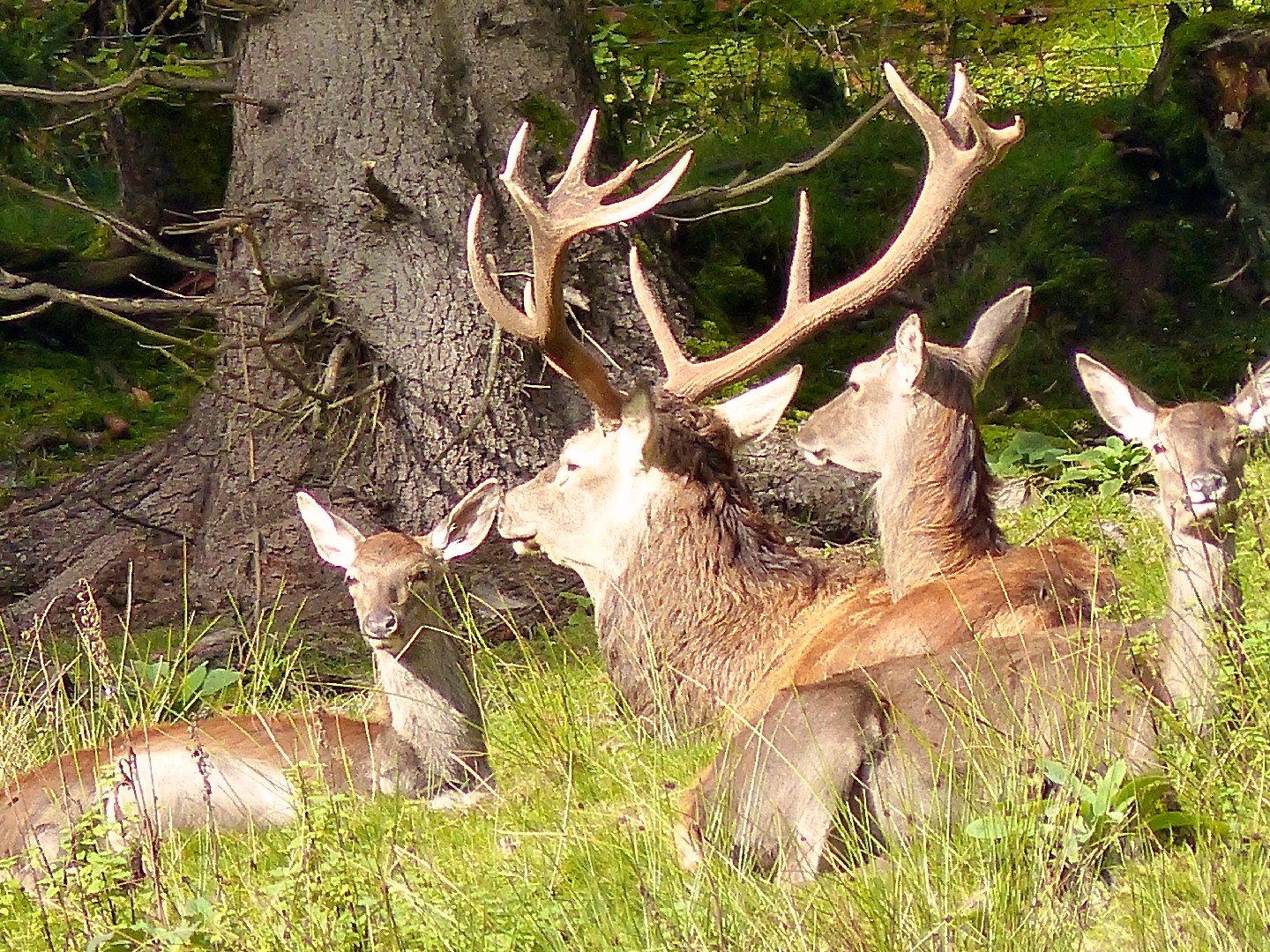Western european red deer
A species of Cervus Scientific name : Cervus elaphus elaphus Genus : Cervus
Western european red deer, A species of Cervus
Scientific name: Cervus elaphus elaphus
Genus: Cervus
Content
Description General Info
 Photo By Roman Boed , used under CC-BY-2.0 /Cropped and compressed from original
Photo By Roman Boed , used under CC-BY-2.0 /Cropped and compressed from original Description
Western european red deer is renowned for their prominent role within forest ecosystems. Their selective grazing behavior leads to diverse vegetation structure, which enhances biodiversity. In winter they exhibit a survival mechanism called yarding, where they aggregate in densely forested areas to reduce energy expenditure and avoid predators, contributing to their resilience in harsh environments.
General Info
Lifespan
10-20 years
Diet
Western european red deer is a herbivorous species primarily subsisting on grasses during summer months. However, bark, twigs and foliage of deciduous trees become crucial in winter. Additionally, acorns and berries supplement its diet.
Appearance
Western european red deer is a substantially-sized deer with a strong, sleek body covered in coarse fur. Its coat varies seasonally from light brown in summer to grey in winter, with calves displaying spotted patterns. Males are characterized by an impressive set of branching antlers, which they shed annually. Females are slightly smaller and sport no antlers. The species exhibits a distinctive white rump patch and a long, bushy tail.
Behavior
Western european red deer typically lives in social groups, forming harems of females and their young, led by a dominant male. During the rutting season, males engage in aggressive sparring matches for possession of harems. Western european red deer is highly adaptive, switching between grazing and browsing depending on food availability. Territoriality manifests prominently during rutting seasons with males often marking their territories by thrashing vegetation with their antlers.